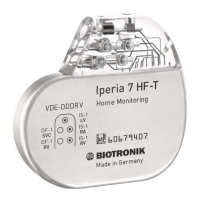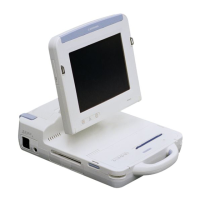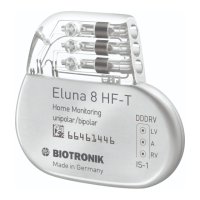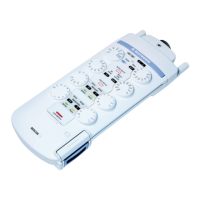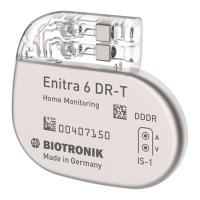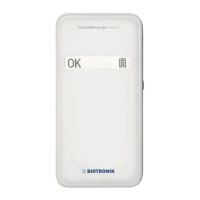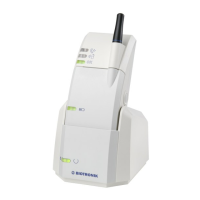Do you have a question about the BIOTRONIK BIOMONITOR IV and is the answer not in the manual?
The primary implantable device for subcutaneous ECG monitoring.
Tool for setup, viewing, saving, and printing stored information.
Telemetry device for forwarding data to the Home Monitoring Service Center.
Lists arrhythmias like AF, bradycardia, tachycardia, pause, SRD.
For patients at risk or with symptoms of cardiac arrhythmias.
No known contraindications, patient condition is key for tolerance.
Covers device conditions, patient requirements, and scanner limits for MR scans.
Potential impact of co-implanted devices on BIOMONITOR IV function.
Risks and precautions with diathermy, TENS, defibrillation, radiation, etc.
Proper procedures to prevent device damage and ensure functionality.
Sources and effects of EMI on the device and patient safety.
Overview of the wireless remote monitoring system.
Procedures for device removal, incineration, and return.
Setup of recording criteria for arrhythmias via the programmer.
Preconfigured programming sets based on patient indications for easier setup.
Configuration of AF detection parameters like sensitivity, windows, and intervals.
Programming tachycardia detection using rate limits and counters.
Configuring bradycardia detection with zone limits and duration.
Parameters for detecting sudden decreases in heart rate.
Defining the minimum duration for a pause event to be detected.
Patient-activated recording of symptomatic episodes.
Setting the time and duration for collecting resting heart rate data.
Settings for automatic data transmission to the Home Monitoring system.
Adjusting signal sensing parameters for optimal detection.
Inputting patient, physician, and hospital information.
Summary of statistical information stored by the device.
Details on how statistics are collected and reset.
Information on heart rate, variability, and activity trends over 240 days.
Analysis of AF events, including trends, time of occurrence, and duration.
R-wave trends and noise duration trends for signal quality assessment.
Enables remote monitoring of patient cardiac status.
How data is sent via CardioMessenger.
Details on trend and event reports.
Data categories included in the Home Monitoring Report.
Automatic evaluation of recorded episodes against set criteria.
Storage and retrieval of patient-specific data.
Tool to aid in programmer head positioning for communication.
Procedures to maintain sterility and proper storage conditions.
Importance of follow-up visits and product features.
Live display of subcutaneous ECGs on the programmer.
Information displayed on the follow-up screen.
List of stored episodes with event details.
Minimum snapshots for different arrhythmia types.
Visual example of an AF recording with markers.
Visual example of a tachycardia recording.
Visual example of a bradycardia recording.
Visual example of a pause recording.
Visual example of a symptom event recording.
Explains BOS, ERI, and EOS for device service life.
Expected service life in years under standard conditions.
Procedure for safely opening the sterilized packaging.
Steps for implanting the BIOMONITOR IV using the FIT OneStep Tool.
Guidelines for safely removing and disposing of the device.
Overview of the accessory for manual ECG recording.
How to test the Remote Assistant III for proper function.
Identification of key components like trigger key and LEDs.
Step-by-step guide for patients to initiate an ECG recording.
Explanation of battery status based on LED behavior.
Interpretation of LED signals for recording success.
Lists key parameters and their ranges for AF, Tachy, Brady, SRD, Pause, Symptom.
Details on device coatings like Silicone and Iridium.
Power source and battery voltage information.
Physical dimensions, mass, and volume of the device.
Compliance information for the BIOMONITOR device with FCC rules.
Compliance information for the Remote Assistant with FCC rules.
| Device Type | Implantable Cardiac Monitor |
|---|---|
| Size | Small |
| Remote Monitoring | Yes |
| MRI Compatibility | Conditional |
| Implantation Depth | Subcutaneous |
| Data Transmission | Wireless |
| Detection Capabilities | Atrial fibrillation, bradycardia, tachycardia |
| Communication | Wireless |
| Sensing Technology | Advanced signal processing |
